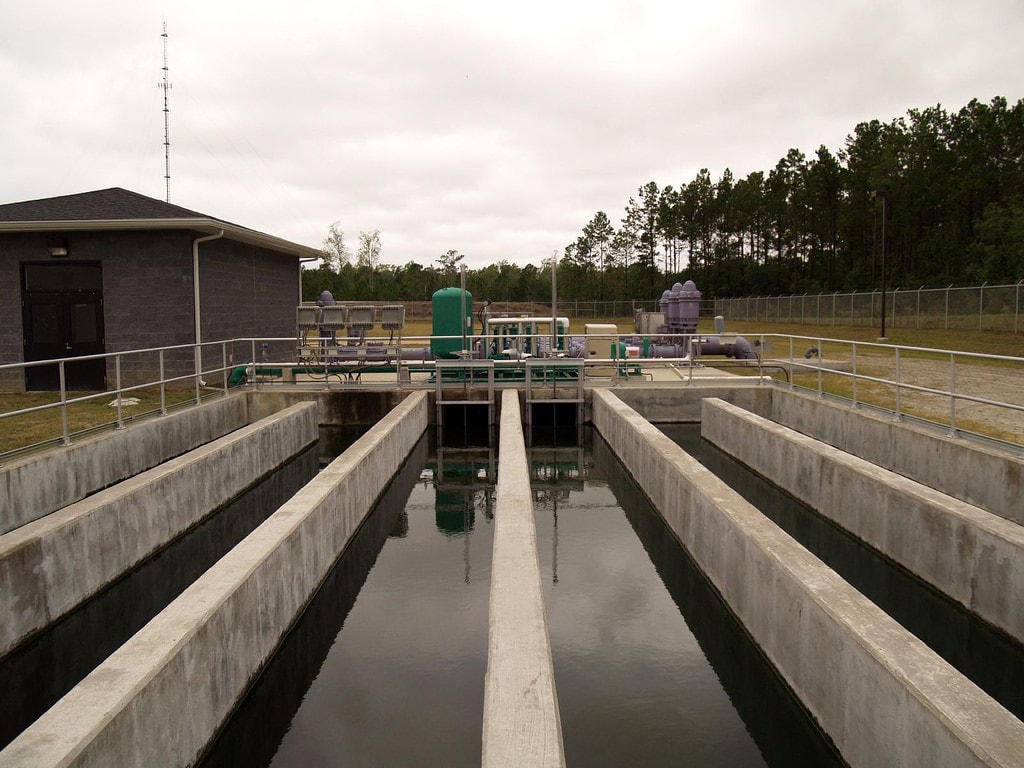A pressing problem of mining and ore industry is the removal of arsenic from waste water by precipitating it using iron hydroxide or reduction by Na2S, K2S, FeS2.
The sedimentation process occurs when a ferrous salt, such as FeCl3, forms a soft amorphous sediment Fe(OH)3 in alkaline environment, which has larger active area. As the substance precipitates, it adsorbs and carries away ions of arsenite and arsenate. This is the process of reducing AS5+ to AS3+.
We have run tests using electromagnetic fields in the process of arsenic removal from waste water.
There were two directions of research:
- Precipitation of arsenic compounds as complexes;
- Reduction of arsenic compounds.
The waters used in the tests were taken from production of magnesium, xanthate production and processing of pyrites.
The reagents used were ferrichloride, nitrite concentrate, potassium and sodium sulphide, which are part of xanthate production.
Quality of waste water purification depends on the pH of the media, the amount of reagents and other factors. Therefore, we research the influence of the following factors on precipitation or reduction of arsenic:
- Amount of reagents;
- pH of the environment;
- duration of processing in the vortex layer;
- duration of saturating the researched water sample with oxygen to improve process conditions.
The reagent used to remove waste water from arsenic was ferrichloride in carious weight ratios to the content of arsenic in the water. The exiting industrial process uses 10 times the amount of FeCl3, only bringing arsenic content to the maximum allowable limits.
In the process we used AVS-100 vortex layer device (m = 150 g, τ = 3-5 seconds), and with the consumption of the reagent in the same amount as in the exiting technology, no arsenic was detected in purified water. Using a 5 time excess of the reagent yields the same results, while 3 times excess significantly lowers the concentration from initial 2115 mg/dm3 to residual 116 mg/dm3.
The conditions of the process during the research were changed as follows:
- Loading of the reagent (pyrite concentrate) into the water without prior pulverization in AVS;
- Loading of pyrite concentrate pulverized in AVS (τ = 5-60 seconds, pH = 5-8), and supply of air into the water without processing in the device. The amount ot reagent changed depending on arsenic concentration.
To remove arsenic from waste water of a copper plant using AVS, the reagents used were Na2S, K2S, which are part of xanthate process byproducts.
The parameters of purification process were: τ = 1-3 seconds, pH = 3-4, m = 175 g, concentration of AS5+ in initial water 1.6 g/dm3, acidity 5-6 g/dm3.
The results of waste water purification from arsenic are shown in Table 4.
Table 4
The results of researching arsenic-containing waste water purification in AVS
|
Ferromagnetic elements |
Concentration of AS5+ in initial water, |
Reagent consumption, |
Duration of processing in the vortex layer, |
Concentration of arsenic in purified water, |
|||
|
weight, |
length, |
diameter, |
|||||
|
Magnesium production |
|||||||
|
150 |
16-18 |
1,6 |
2115 (pH = 7-8) |
10 times FeCl3 |
5 |
0 |
|
|
150 |
16-18 |
1,6 |
2115 (pH = 7-8) |
5 times FeCl3 |
1-5 |
0 |
|
|
150 |
16-18 |
1,6 |
2115 (pH = 7-8) |
3 times FeCl3 |
1-5 |
0,9-0 |
|
|
150 |
16-18 |
1,6 |
2115 (pH = 7-8) |
3 times FeCl3 |
5 |
1,0 |
|
|
175 |
16-18 |
1,6 |
35 (pH = 7-8) |
Pyrite concentrate, 65 g |
60 |
28 (no bubble aeration) |
|
|
175 |
16-18 |
1,6 |
35 (pH = 7-8) |
Pyrite concentrate 3.5 g |
60 |
24 (no bubble aeration) |
|
|
175 |
16-18 |
1,6 |
35 (pH = 7-8) |
Pyrite concentrate 10.0 g |
60 |
0,05 (no bubble aeration) |
|
|
175 |
16-18 |
1,6 |
35 (pH = 5-6) |
Pyrite concentrate 0.65 g |
5 |
2,0 (no bubble aeration) 0,04 (with bubble aeration) |
|
|
Xanthate waste water |
|||||||
|
175 |
16-18 |
1,6 |
2000 (pH3) |
7,0 Na2S |
0 | ||
|
175 |
16-18 |
1,6 |
2000 (pH3) |
6,0 Na2S |
0,9 | ||
|
175 |
16-18 |
1,6 |
2000 (pH3) |
5,5 Na2S |
1,5 | ||
|
175 |
16-18 |
1,6 |
2000 (pH3) |
5,0 Na2S |
12,0 | ||
Research shows that the use of vortex layer device while removing arsenic from waste water allows to completely precipitate the arsenic after 1-5 seconds of processing in the vortex layer and reduce reagent consumption by 3-5 times compared to the regular technology, simplify the process and make it continuous.

